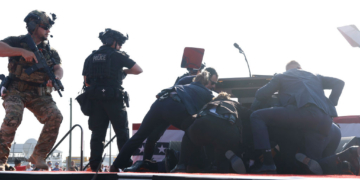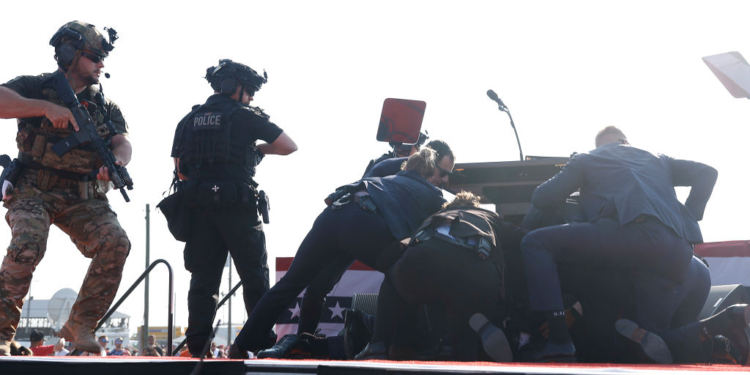An investigation by the the Senate Committee on Homeland Security and Governmental Affairs has unveiled a host of failures by the Secret Service the day of the first assassination attempt on former President Donald Trump.
Fox News reported Wednesday that some of these failures include an agent, with just an hour of informal training on drone equipment, calling a toll-free tech support hotline for help, citing the preliminary report.
This came after a request was denied for additional unmanned equipment.
“Multiple foreseeable and preventable planning and operational failures by USSS contributed to [Thomas] Crooks’ ability to carry out the assassination attempt of former President Trump on July 13,” according to the preliminary report. “These included unclear roles and responsibilities, insufficient coordination with state and local law enforcement, the lack of effective communications, and inoperable C-UAS systems, among many others.”
Crooks opened fire at a campaign rally in Butler, Pennsylvania, that left one spectator dead, two critically injured and Trump being shot in his ear.
Investigations have delved into what happened that day and what went wrong.
U.S. Secret Service Chief of Communications Anthony Guglielmi said Wednesday: “We have reviewed the interim report on the attempted assassination of former President Donald Trump. The weight of our mission is not lost on us and in this hyperdynamic threat environment, the U.S. Secret Service cannot fail. Many of the insights gained from the Senate report align with the findings from our mission assurance review and are essential to ensuring that what happened on July 13 never happens again.”
A lapse in communication between the agencies involved was one issue.
Testimony revealed that agents from Trump’s detail, as well as those from the Pittsburgh field office, didn’t know the Secret Service’s security room and counter-sniper team were told of a suspicious person near the AGR building. Crooks eventually fired shots from atop that building.
“Shortly before shots were fired, a USSS counter sniper saw local law enforcement running toward the AGR building with their guns drawn, but he did not alert former President Trump’s protective detail to remove him from the stage,” the 94-page report read. “The USSS counter sniper told the Committee that while seeing officers with their guns drawn ‘elevated’ the threat level, the thought to notify someone to get Trump off the stage ‘did not cross [his] mind.’”
Normally, Secret Service counter snipers would not have been deployed, according to the report, but were added due to “credible intelligence” of a possible threat, per the report. An out-of-office candidate would not have a counter-sniper detail before being nominated by the party.
The Republican National Committee Convention was set a few days later.
The AGR building was a point of concern for local law enforcement, but the rooftop stayed unsecured.
Advance agents on Trump’s detail requested more resources that include more drone equipment and counter-assault agents that would be liaisons with local SWAT teams.
The committee found those requests “were denied, at times without explanation.”
“The consequences of those failures were dire,” Michigan Sen. Gary Peters, the Democratic chairman of the Homeland panel, said, per the Associated Press.
The House panel is also looking into a second assassination attempt on Trump earlier this month.
On Sept. 15, Secret Service agents arrested Ryan Routh, who was hiding with a rifle on the golf course Trump was playing.


























 Continue with Google
Continue with Google